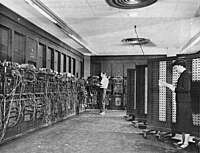History of compiler construction

Hey kiddo, have you ever worked with a machine? Let’s say a simple calculator, for instance. You see, these machines don’t understand human languages like you and me do. They only understand the binary language, which is a series of 0s and 1s.
Now, imagine you're a programmer, and you want to write a program that can work on these machines. How would you communicate with the machine to convey your instructions? That’s where a compiler comes in.
A compiler is like a translator. It takes your instructions written in a high-level language, such as Java or Python, and translates them into binary language that the machine can understand.
The first compiler was developed in 1951 by Grace Hopper for the UNIVAC I computer. It was called the A-0 system and could translate symbolic mathematical code into machine language. Before the A-0 system, programmers had to write machine code directly, which was tedious and error-prone.
Over time, programming languages became more complex, and compilers evolved to accommodate them. In the 1960s, John Backus developed the Fortran language and its corresponding compiler. Fortran was the first high-level language specifically designed for scientific and engineering applications.
In the 1970s, a new language called C was developed by Dennis Ritchie at Bell Labs. The C compiler was written in C, making it self-hosting. This meant that the C compiler could be used to compile its own source code, which greatly simplified the process of creating compilers for new languages.
In the 1980s, object-oriented programming became popular, and the compilers were adapted to handle the new approach to programming. The 1990s saw the rise of graphical user interfaces, and compilers were developed to support this new way of interacting with computers.
Finally, with the advent of the internet and mobile devices, new programming languages and compilers were developed to accommodate these changes. Today, there are thousands of programming languages and compilers, each optimized for different types of applications and devices.
So, that’s the history of compiler construction, kiddo! It's all about translating human language into binary code so that machines can understand and perform the instructions given to them.
Now, imagine you're a programmer, and you want to write a program that can work on these machines. How would you communicate with the machine to convey your instructions? That’s where a compiler comes in.
A compiler is like a translator. It takes your instructions written in a high-level language, such as Java or Python, and translates them into binary language that the machine can understand.
The first compiler was developed in 1951 by Grace Hopper for the UNIVAC I computer. It was called the A-0 system and could translate symbolic mathematical code into machine language. Before the A-0 system, programmers had to write machine code directly, which was tedious and error-prone.
Over time, programming languages became more complex, and compilers evolved to accommodate them. In the 1960s, John Backus developed the Fortran language and its corresponding compiler. Fortran was the first high-level language specifically designed for scientific and engineering applications.
In the 1970s, a new language called C was developed by Dennis Ritchie at Bell Labs. The C compiler was written in C, making it self-hosting. This meant that the C compiler could be used to compile its own source code, which greatly simplified the process of creating compilers for new languages.
In the 1980s, object-oriented programming became popular, and the compilers were adapted to handle the new approach to programming. The 1990s saw the rise of graphical user interfaces, and compilers were developed to support this new way of interacting with computers.
Finally, with the advent of the internet and mobile devices, new programming languages and compilers were developed to accommodate these changes. Today, there are thousands of programming languages and compilers, each optimized for different types of applications and devices.
So, that’s the history of compiler construction, kiddo! It's all about translating human language into binary code so that machines can understand and perform the instructions given to them.
Related topics others have asked about:
